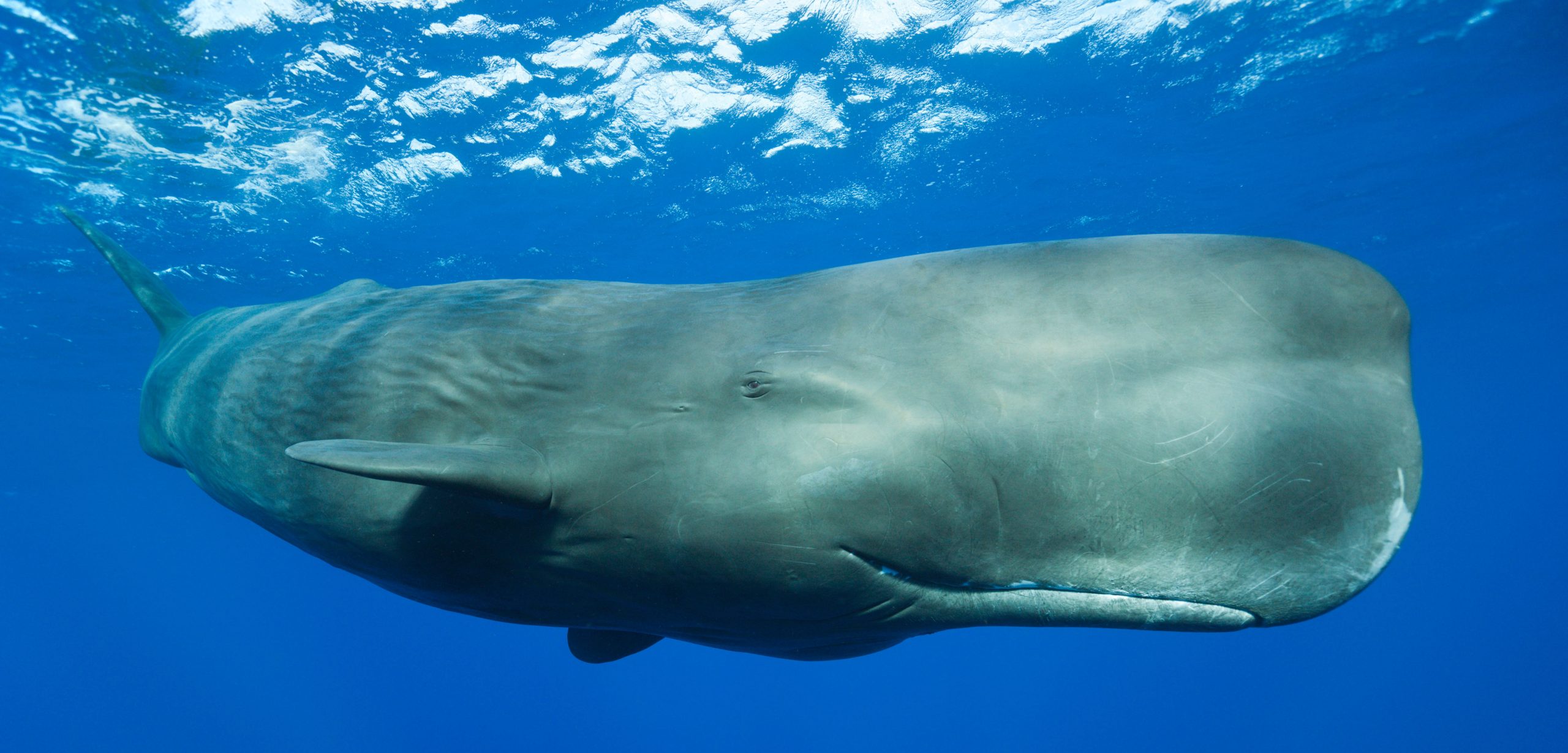Sperm Whales Have an “Eve”
New research reveals that every sperm whale in the world can be traced to a single female.
Article body copy
All of the sperm whales in the world descended from just one female who lived tens of thousands of years ago. That surprising result comes from an examination of the mitochondrial DNA of more than 1,600 sperm whales from all over the world. Fittingly, researchers have named her Eve.
Mitochondrial DNA is only passed from mother to child, explains the study’s lead author Alana Alexander, a postdoctoral researcher at the University of Kansas, who conducted the research while she was a doctoral student at Oregon State University (OSU).
Alexander initially tested the samples at the behest of the nonprofit whale conservation organization Ocean Alliance. The organization had previously shown that sperm whales carry toxic levels of heavy metals in their bodies, and they sought the help of OSU’s Marine Mammal Institute to confirm that each of the samples in that study had come from a different whale.
Yet while carrying out this fairly routine analysis, Alexander stumbled upon signs of Eve’s intriguing genetic legacy.
“Previous papers had suggested that sperm whales maybe had low mitochondrial diversity,” Alexander says. But her assumption had been that this low diversity was an accidental side-effect of not having enough data.
In her new analysis, Alexander conducted genetic tests on 542 samples that had been collected over the past five and a half years by Ocean Alliance and compared them to data from previous studies of more than 1,000 additional whales published over the past 15 years. “We thought that the additional samples might uncover more diversity.”
Instead, they did the exact opposite.
Sperm whales have existed for millions of years, but Alexander’s research suggests that Eve only appeared on the scene in the past 10 to 80 thousand years. How she came to dominate the sperm whale family tree remains a mystery. Alexander says the research suggests that at some point Eve and her descendants out-competed other females—though it’s unclear how—and spread their genetic lineage throughout the world.
The fact that Eve’s DNA has been found all over the world opens up additional questions. Today, only male sperm whales travel far from where they are born. Females tend to stay put, so Eve’s mitochondrial DNA should have as well. But, for some reason, it didn’t.
The new genetic study also reveals that the current lack of female sperm whales migrating puts a limit on genetic flow for the species—an issue in the face of anthropogenic climate change and other threats, which are isolating sperm whales into smaller, geographically isolated sub-populations. Populations in Eve’s time may have been more able to mingle with each other over time. That opportunity is now no longer available.
Alexander says this suggests that management strategies for sperm whales may need to prioritize females, not necessarily populations as a whole. If all of the females in a given location die out, it now appears unlikely that any new females would migrate to replace them.
Vanessa Tossenberger, policy director for Whale and Dolphin Conservation, who was not affiliated with the study, agreed. “What this study has introduced is another reason why it is so important to protect females if we want to conserve a population,” she says. “It also demonstrates the strong fidelity and the slow expansion of the species following whaling. This needs to be taken into in account for any established quotas that exist or could exist in the future.”

